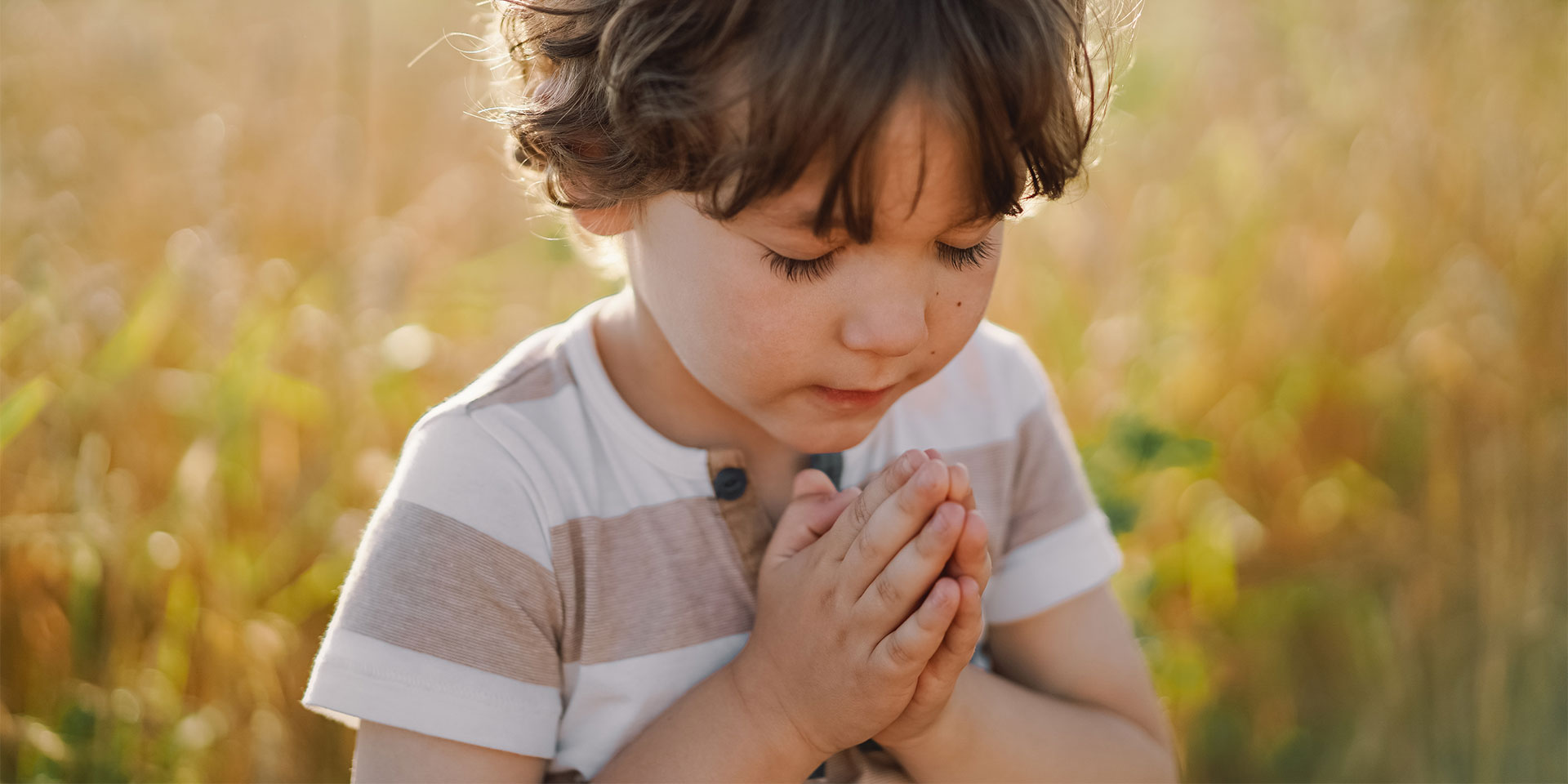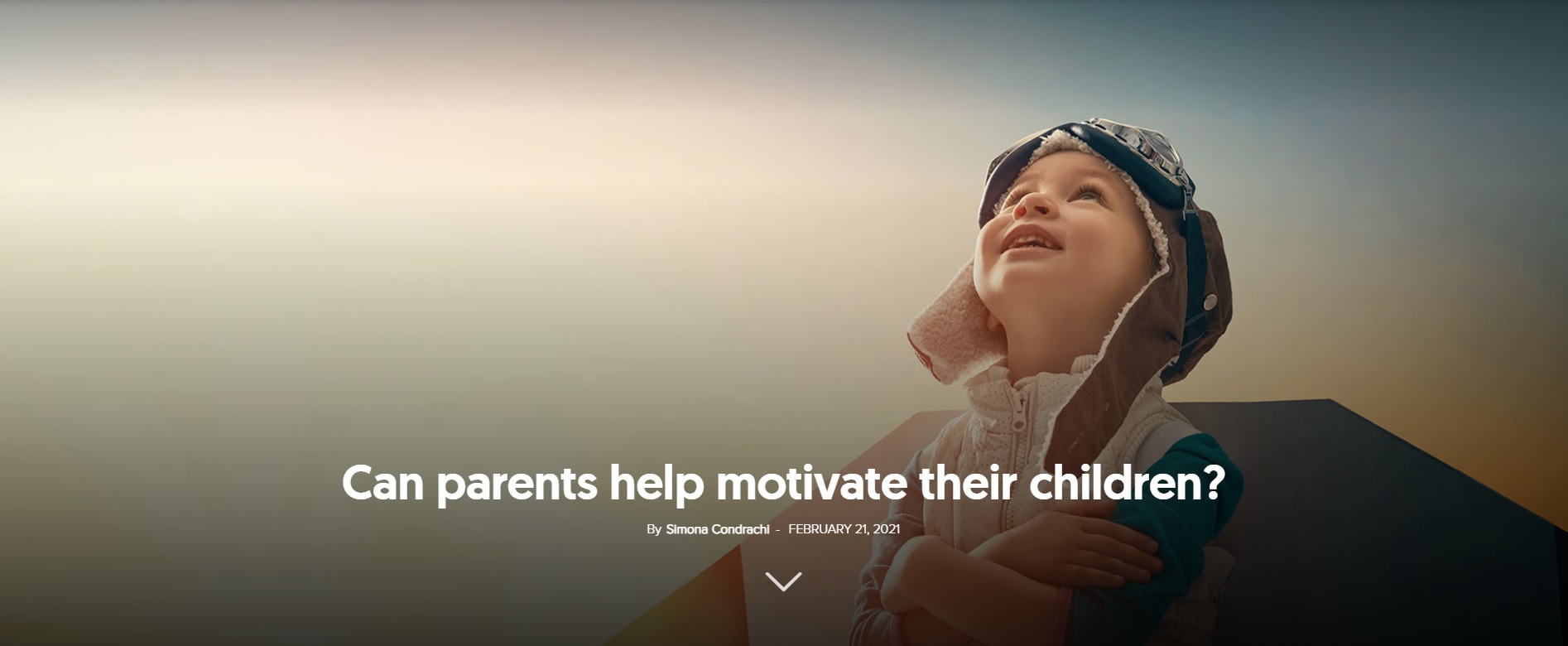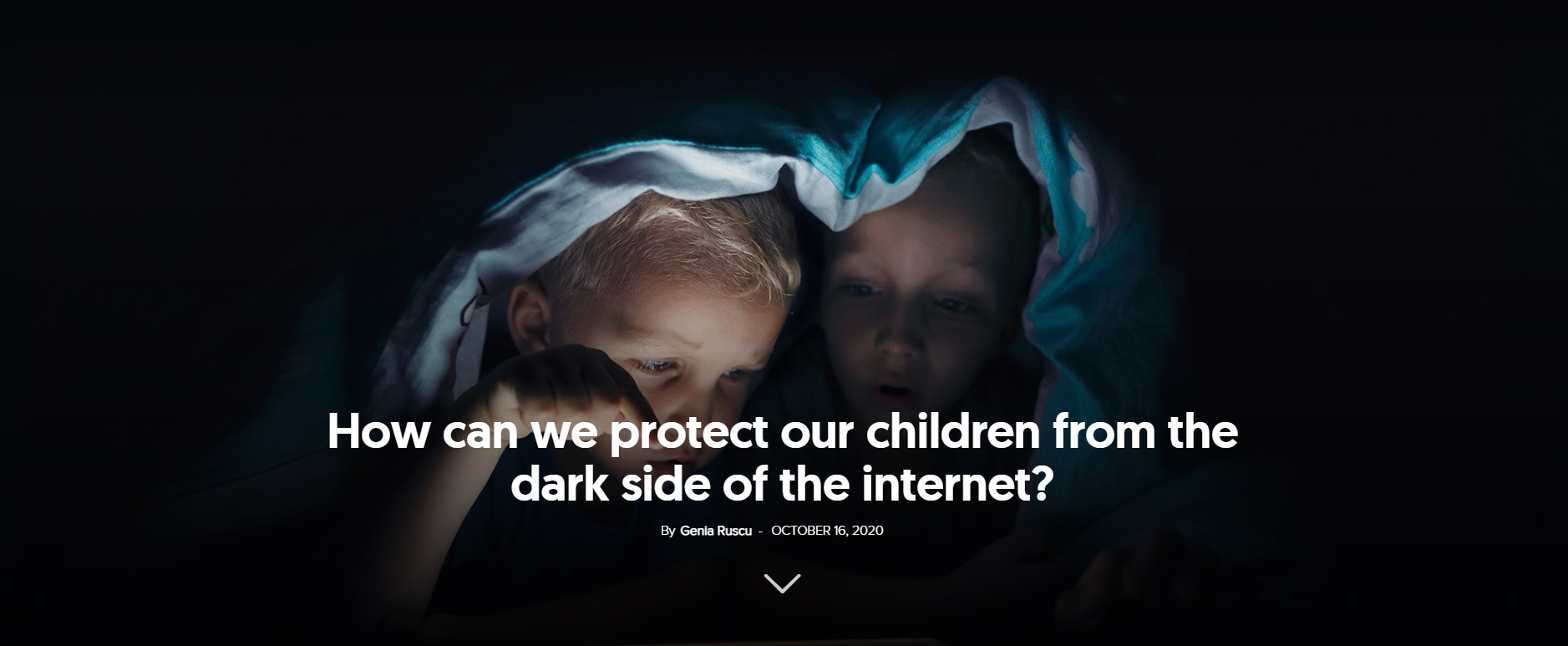For Christian parents, there is no greater concern than to provide their children with a Christian education. The first public demonstration of this concern is the blessing of children at young ages, in various ways: the baptism of children in traditional churches, or a simple prayer of blessing in Protestant churches. Dedicating their children to God, one way or another, gives parents a sort of certainty, and begins to form the child’s identity: they are Christian!
Later, stories from the Bible are added, Christian songs, moral lessons, short prayers, and Bible verses, all clothed in parents’ daily prayer for their children.
Beyond all the good rituals and habits we want for our children’s lives, the main concern remains how we teach children to pray so that they can have a dynamic and authentic religious life.
What we learn in childhood we carry around with us for a long time, whether we want to or not. As adults we must often unlearn certain patterns or habits we learned in our childhood that are no longer relevant or efficient, to adopt new ones that will positively impact our lives. It would be much more effective if we learned sustainable habits from an early age: proper nutrition, work discipline, time management, saving money, and—why not?—the habit of genuine prayer.
What should we consider when building a Christian education for children?
The environment in which a habit is modelled for a child is an important first factor for building the habit of prayer. Through the environment one understands the physical, social and emotional environment where the child is growing up. Parents, teachers, and colleagues have a major impact on the child’s development because children shape their habits and thinking patterns through imitation and inductive learning, as two Cambridge professors explain.
In his book, Atomic Habits, James Clear puts forth four laws for building a sustainable habit. A habit should be: a) visible, b) attractive, c) easy, and d) satisfying, the reverse being equally valid[1]. These laws are applicable both to the form and the content of children’s prayer.
Although parents must consider the child’s age to adapt prayer to their child’s understanding and ability to their apply their understanding, age is not an obstacle for building the habit of prayer and a gradual experience of getting to know God. “In childhood the mind is readily impressed and moulded, and it is then that boys and girls should be taught to love and honour God… God wants every child of tender age to be His child… Young though they may be, the youth may be members of the household of faith and have a most precious experience.”[2]
Who do children pray to?
The way in which children perceive God influences their prayers. In their first years, children will adopt the God of their parents until they develop the capacity to think critically, and in an abstract way. What do you convey to your child about God? Is He a sovereign waiting for public and formulaic worship a couple of times a week, at church? Or is He also a friend you can talk to any time you need to? Is He just an all-powerful guru and you only pray to Him when you need help? Is He a judge waiting for confession so He can extend forgiveness? Is He waiting for respect, adoration? Can He listen to you at any time? Can you come directly to Him or do you need intermediaries?
Children will approach God according to the model they perceive. Prayer will be frightening or not, depending on the way we present God to our children. A personal example always prevails, and the way we pray reveals a big part of the authenticity of our spiritual life: how do we come close to God in prayer? What do we inspire in children about God when we pray? Is He available? Do we pray standard or creative prayers? For the parents’ prayer to be a way to represent God to children and make Him accessible, the titles we use to address Him can be diversified according to the prayer’s theme: Our Father in heaven, Holy Father, Lord, Father, Dear Jesus, My good friend, etc.
To know that God is interested in us, children need proof, especially in their first years when their abstract thinking is not yet developed. Did you pray for your sick neighbour and she got better? Then tell your child about it. Did you lose your keys and pray to find them quickly? Invite your child to be a part of the thanksgiving prayer. It is also important for them to know that God may answer in a different way or later than we expect. Teach them perseverance, patience, and complete devotion from a young age.
Our children really want to live in a house, in the countryside. They’ve made sketches of the house, and even started saving money and they often pray about it, also because they really want a dog to fit in their picture. I do not know how and when God will answer but they need to experience long-term prayer on their own and accept the divine plan in their lives. Regardless of the shape and content of the prayer, children must know that God enjoys hearing them turn to Him.[3]
What could a child pray about?
Anything. Prayer is a spiritual urge, and it also applies to children[4]. Children need to understand that prayer is not just about asking for something from God, but also talking to Him about anything. A 6-year-old confessed to his mother that he also told God about his new friend. The imaginary friend many children have could become Jesus, the invisible friend they can pour their hearts out to.
Children will love prayer if it opens up that authentic connection between themselves, their needs, and the way they see life and God, rather than sticking to certain patterns. Children will pray for a new bike, for spring to come earlier, for their dog to get better, for the cat to return, for better grades, for the piano teacher not to come, for their friend’s broken leg, and for everything that frightens them or interests them. The wider the approach to the content they are allowed, the closer they will come to God and the better they will know Him.
For prayer to be attractive and satisfying it must be relevant; it must match the child’s interests, needs, and curiosity.
When they are little, children need to pray for concrete, visible, palpable things. If we teach them to pray for Jesus to enter their hearts or for the Holy Spirt to live in them, it might be a bit scary for a child to know someone else is “living in their body.” They might think that heart surgery is required for that. It would be better to teach them to listen to the good thoughts that come to their mind. A 3-year-old told her mother that, although she was used to calling her brother “stupid”, after a few prayers she managed to say just “stu-” and then keep quiet because a good thought came to her mind.
If we give them the necessary space and time to pray, we will probably come across funny or touching prayers like: God please let none of my teeth fall out anymore…, I’d like to have an elephant too…, Will you please make my grandma young…, I want to go to Mars too…, Please bring medicinal alcohol in the shops… (applicable during the pandemic), Grandpa is old and he might no longer see well when it’s raining, please make the rain stop till he gets home.
For situations in which a child prays for something which is clearly against God’s principles, it is the parent’s duty to guide them, but without discouraging from being open in prayer. For instance, when the child prays to be stronger so he can beat up his classmate, the focus in a later discussion with the child should not fall on the fact that they should not pray for this but, but rather on the reasons they have for wanting to beat up the classmate in the first place, how beating them up will make them feel afterwards, what else they could do to solve the conflict, how God sees their classmate, whether God would positively answer such a request, and so on, and then to rephrase the prayer according to the new understanding.
Probably the most sensitive moment in intercessory prayer is a child’s prayer for their parents. It is a way to manifest their empathy publicly and wish for the problems in their parent’s life to be solved.
At the same time the child will learn that they are limited and the only undefeated one is God. A 2-and-a half-year-old child, seeing that his mother had been ill for a few days, kneeled beside her bed and simply said: “Father, please mama no sick! Amen!” When they are little, children believe the world revolves around them. For them a prayer for the missionaries in Africa would probably be inappropriate. More appropriate would be one for their family or close friends, even for that one classmate who keeps fretting or talking during class. Praying for missionaries in Africa might be of real interest to an 8- or 9-year-old after they are able to imagine circling the globe and touching down in Africa, knowing that many people there are in danger.
The Lord’s Prayer is usually memorised by children without it, however, having any meaning to them. What the child should remember are the principles of this prayer rather than their formulation. There are many acrostics that promote the principles of the Lord’s Prayer, one of them being CHAT (C- confess, H- honour, A- ask, T- thanksgiving).
How could a child pray?
In many ways. Prayer should not be intimidating or frightening for children. The child should not have the feeling they have failed when praying, thinking they did not pray the right way. Often, parents focus more on the form, working to the disadvantage of what the prayer should be for the child: they look to see whether their eyes are open or not, children must stand up straight during the prayer, their head bowed, or on their knees every time, and using certain formulas to begin and end the prayer. Without minimalizing respect in worship, its manifestation will come naturally when the child becomes aware of who God is for them when they come before Him.
Content brings along form. In the context of public worship, during religious services, adoration is primordial and then the form of the prayer will also have to match the purpose. On the other hand, a child enjoying a field of flowers should not feel forced to kneel, close their eyes, bow their heads and say: “Our Father in heaven, Holy Father living in glory, thank you for the flowers!” It would be more natural for them to gather a few flowers and, while leaping in the field, to lift up their eyes and even their hands towards the sky in amazement and utter a simple, “Thank You, Lord!”
Using certain formulas and prayer patterns will generate boredom, routine, and will push the child away from what prayer really is.
For very small children, using certain short words is very useful, due to their reduced capacity to talk, but still the words used should be diversified and adapted. In the book Child Guidance, author Ellen White is firm: “In many cases the morning and evening worship is little more than a mere form, a dull, monotonous repetition of set phrases in which the spirit of gratitude or the sense of need finds no expression. The Lord accepts not such service.”[5]
The same author recommends: “It should be the special object of the heads of the family to make the hour of worship intensely interesting… There is no reason why this should not be the most interesting and enjoyable exercise of the home life, and God is dishonoured when it is made dry and irksome.”
Even the Lord’s Prayer can be burdensome for a child, especially if they cannot pronounce or understand all the words. Sometimes this brings confusion rather than worship. When He uttered the Lord’s Prayer, Jesus Christ did not intend this to be repeated like a formula, but rather to be a model for our prayers: simple, persistent, and comprehensive.
All the children I know in the beginning said things like, “Your Kingdom be” instead of “Your Kingdom come”; they did not manager to utter “our debtors”; they mispronounced “deliver us”; they even skipped this word and reversed the order “To You be the Kingdom and glory and power”, feeling, at the end of the prayer, guilty of making mistakes rather than loved by God. Children need to be taught to use simple words, spoken clearly and intelligibly, for them to feel comfortable and think of prayer as an attractive practice. Sometimes a song can be used as a prayer.
When should a child pray?
Anytime, anywhere. in addition to the well-established moments in the life of the family or the church, children need to learn that they can come to God in any circumstance.
As parents, we should learn to cultivate more spontaneous prayers in view of our children, prayers like “Lord, help me!” or the ones on the way to school (for the math test), at the stoplight (for the angry driver), in line at the gas station (for the crippled dog), after reading a story (for poor children), when we see a butterfly on a flower (“Thank You, Lord!”), when we look at the rainbow (“How wonderful You are!”), when we are angry (“Help me keep quiet!”), on the dentist’s chair (“Please, let it not hurt!”). A 4-year-old whose parents encouraged her in personal prayer, who was on a ski slope for the first time, said only, “Lord, be with me!” and then let go confidently. By practicing prayer in various moments of the day, children will learn to trust God and feel at ease in their relationship with Him.
Prayer is communication with God, and Jesus said: “Let the little children come to me!” Daily troubles cross the path of both young and old. Those who want to live patiently, lovingly, and joyfully, must pray. How else would we want our children to grow up?





















